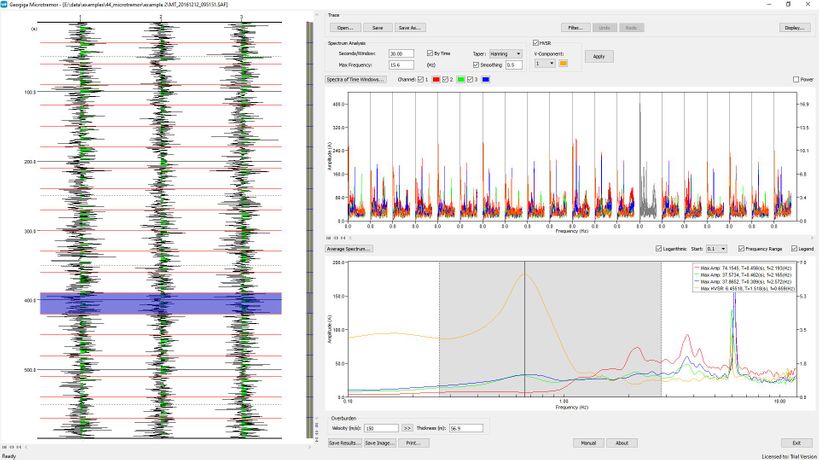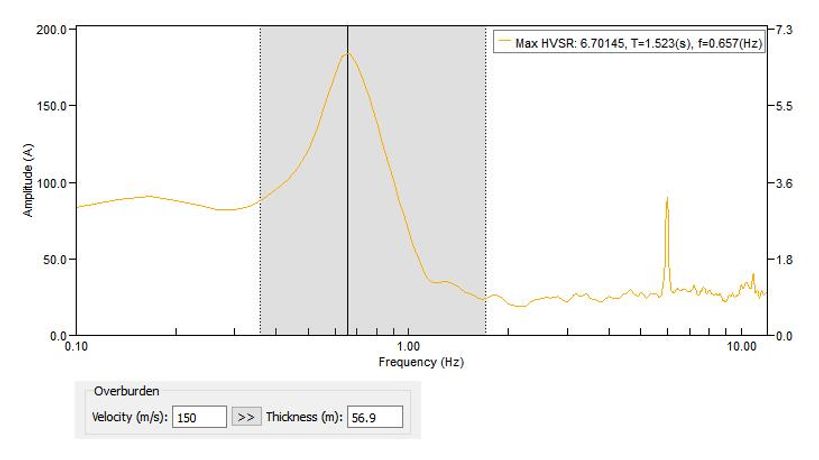Geogiga Seismic Pro 9.3 is a complete seismic data processing and interpretation software
package adapted for near-surface geophysics. It contains 18 standalone applications
handling the full range of seismic survey methods from Reflection, Refraction, and Surface
Wave to Borehole Seismic. There are also utilities for wavefield modeling, velocity model
plotting, and much more.
Reflection
Reflection Data Processing
Efficiently process reflection data in one application with multistep redo and undo
Single-fold Reflection or GPR Data Processing
A feature-rich application for processing single-fold seismic reflection or GPR data

Refraction
Conventional Refraction Analysis
Highly interactive first-break picking and automatic phantom to derive layered velocity structures with GRM
2D Refraction Tomography
Estimate subsurface velocity structures with efficient first-break picking and fast shortest path ray tracing
3D Refraction Tomography
Derive three-dimensional subsurface velocity structures with efficient first-break picking and fast 3D shortest path ray tracing
Surface Wave
Active Surface Wave Data Analysis
Efficiently process active surface wave data using MASW and SASW with GA inversion
Active and Passive Surface Wave Data Analysis
All-in-one application for efficiently processing active and passive surface wave data with MASW, REMI, SPAC, and ESPAC
3D Plotting for Surface Wave Analysis
Interactive rendering of 3D volume built from velocity profiles in a survey area
Microtremor Measurements
Estimate the site predominant frequency using HVSR with a few clicks
Real-time Monitoring for Passive Surface Wave Data Acquisition
Improve the efficiency of passive surface wave data acquisition with real-time generated dispersion images
Borehole Seismic
Crosswell Tomography
Efficiently derive velocity structures among vertical or deviated wells with fast and robust ray tracing
Vertical Seismic Profiling
Efficiently process zero-offset or offset VSP data
Downhole Seismic Velocity Logging
Interactive simultaneous processing of P-wave and S-wave data for downhole velocity surveys
Utilities

Seismic Data Preprocessing
Preprocess seismic data with various functions, such as resampling, vertical stacking, nodal data assembling, trace swapping, and format conversion
2D and 3D Plotting of Velocity or Seismic Sections
Plot 3D fence diagram for all velocity or seismic sections in a survey area
Interactive Event Fitting
Interactively determine velocity and thickness of a layered model by fitting T-X curves with refraction and reflection events
1-D Seismic Modeling
Simulate surface waves, refracted and reflected waves for a layered velocity model with analytic solutions
Full-wave Modeling
Elastic full-wave modeling for complex velocity structures, refreshing wavefields and seismograms throughout the process

Version 9.3 is a minor release, intended for minor feature updates and bug fixes. The release
notes are provided in the following order:
Part 1 – Feature Updates
This section lists the common feature updates to Seismic Pro 9.3, and then describes the
updates in each individual module.
General Updates
The following updates apply to most of the modules in Seismic Pro:
➢ When individual records are imported, irregular shot point and receiver coordinates
of all records can all be defined at once by loading geometry information from a text
file, such as in CSV format. The coordinates of shot points and receivers of all
records can also be saved together to a text file.
➢ In a geometry table, the receiver coordinates of an entire spread can be quickly
assigned by interpolating coordinates of multiple selected receivers.
➢ Elevation data can be loaded from a file in CSV format.
➢ Large coordinates, e.g., GPS data, are no longer displayed in scientific notation to
minimize input errors and improve convenience.
➢ When the Custom Size option is used to plot and save seismic traces to an image
file, a prompt will appear if the specified scale is not appropriate.
➢ In a 3D view window, pressing and holding the Home key will simultaneously reset
the scales of X, Y, and Z axes.
Updates to Individual Modules
Following are the updates to each individual module in Seismic Pro:
Front End
➢ In vibroseis correlation, the sweep signal can be chosen from either a file or the
recorded vibroseis traces.
➢ The computational efficiency of vibroseis correlation is significantly improved.
➢ The geometry information is kept unchanged after multiple records are merged.
➢ When single-station data collected from nodal seismometers are merged, the
list of files can include either filenames or filenames and station coordinates.
➢ A simpler text file format of seismic data is supported.
Seismapper
➢ The boundary of jointed velocity sections can automatically be smoothed.
Modeling
➢ A zero-phase wavelet can be specified for modeling reflected waves.
Modeling2D
➢ A dip angle can be defined for a layered velocity model.
➢ A finer grid can be specified to simulate wavefields for a higher frequency
wavelet.
➢ The shot point and receivers can be located in a borehole.
➢ Vertical and/or horizontal components can be selected for modeling.
➢ Wavefield and seismogram snapshots can be saved to the same image file in
order to conveniently create animation frames.
➢ The value range for the display of wavefield is automatically set to the
appropriate value to avoid image flicker in the early stage of wavefield
simulation.

Reflector
➢ Station numbers are no longer required in defining geometry of seismic records.
➢ Irregular coordinates of shot points and receivers are supported.
➢ CMP coordinates can be saved to a text file.
➢ The calculation of velocity spectra is more optimized, and the Semblance
Spectra and the Velocity Scan dialog boxes are reorganized.
➢ A set of menu commands is dynamically added to adjust the display of
subwindows during velocity analysis and when instantaneous attributes are
built.
SF Imager
➢ Position instead of offset of the first trace is used in quickly assigning the
geometry of other traces.
➢ A set of menu commands is dynamically added to adjust the display of
subwindows when instantaneous attributes are built.
Refractor
➢ Surface velocity is calculated according to the regression lines of TT curves with
shot depth correction applied instead of the distances between shot points and
receivers.
➢ More third-party picks formats are supported.
DW Tomo
➢ More third-party picks formats are supported.
DW Tomo3D
➢ The upper and lower boundaries of a velocity model are automatically adjusted
according to the survey geometry and the grid size of the model.
Surface and Surface Plus
➢ An interval velocity section can be plotted without interpolating adjacent layers.
➢ A more reasonable default time window for muting noise in active surface wave
data is set, and the area outside the time window is darker instead of lighter.
➢ An option to plot the colorbar of a dispersion image is added.
Surface Plus only
➢ Dispersion images of multiple passive surface wave datasets with different array
sizes can be combined.
➢ The focus of the dispersion image of the active surface wave data can be
adjusted in order to balance the dispersion energy distributions of passive and
active surface waves.
Surface RT
➢ The maximum waiting time for loading the next record can be adjusted.
➢ A group of buttons is added in the dispersion image window to vertically and
horizontally zoom the dispersion image.
Microtremor
➢ The frequency spectra of three components and HVSR curves can be saved to
a text file.
VSP
➢ A set of menu commands is added to separately adjust the display of original
record, downgoing waves, upgoing waves, and stack.
Part 2 – Bug Fixes
This section lists the general bug fixes in Seismic Pro 9.3, and then describes the bug fixes
in each individual module.
General Bug Fixes
The following bug fixes apply to most of the modules in Seismic Pro:
➢ The defined scales for curve display were always reset to their default values
when the curve display window was reopened.
➢ When a plot of traces with color density was directly printed or saved to an image
file with a custom size, the Reverse option for colormap did not work.
➢ The program stopped responding if the vertical scale value was too small when
the Custom Size option was selected in outputting a trace image.
➢ The image size shown on the Save Image dialog box included the size of title and
axis annotations, which caused confusion with the plot scale settings.
Bug Fixes in Individual Modules
Following are the bug fixes in each individual module:
Seismapper
➢ The program crashed when two parallel and very close sections were jointed.
Reflector
➢ Stacking was not conducted when the Apply button was re-clicked after the
parameters in the Stacking dialog box were modified.
➢ The mouse cursor stopped providing feedback when some processing functions
were applied.
SF Imager
➢ First arrivals picked on a previous seismic record were not cleared in memory
and were wrongly displayed on a newly loaded record.
Refractor
➢ The shot depths were not saved in the picks file, causing incorrect depth section
when first arrivals were loaded without seismic data.
DW Tomo
➢ If the input X coordinate at the highest elevation point was not within the range
of a receiver spread, the shot points and receivers were incorrectly marked on
the velocity section.
DW Tomo3D
➢ When the surface elevation varies greatly, the ray tracing in forward modeling
was incorrect, causing large travel time errors.
➢ Channel numbers of receivers were not automatically assigned when individual
records were imported.
➢ Refreshing the 3D view was abnormally slow when large coordinates were
used.
➢ After the array geometry was modified, the maximum offset was not promptly
updated and could not provide a reference depth for building the initial velocity
model.
➢ The 3D view did not refresh after the parameters of an initial velocity model
were modified, and the newly built model could not be viewed immediately.
Surface Plus
➢ The dispersion image of active surface wave data could not be generated if the
Remove Noise option was selected when combining the dispersion images of
passive and active surface wave data.
➢ When the dispersion images of two different sets of surface wave records were
combined, extra traces were not involved in the calculation of dispersion images
if the second dataset had more traces.
➢ When the dispersion images of two passive surface wave records with different
sampling length were combined, the program crashed if the sampling length of
the second record was shorter and was not an integer multiple of the segment
length.
Microtremor
➢ The maximum values of frequency spectra and HVSR saved in the result file
were obtained from the whole frequency range instead of the defined range.
➢ When the frequency spectra and HVSR were graphed on a logarithmic scale,
the program stopped responding if the frequency interval was set to 1.
PS Log
➢ The plot of traces saved to an image file with a custom size was inconsistent
with that in the display window: the S+ and S- waves were not overlaid, and the
receiver depths were not annotated.

